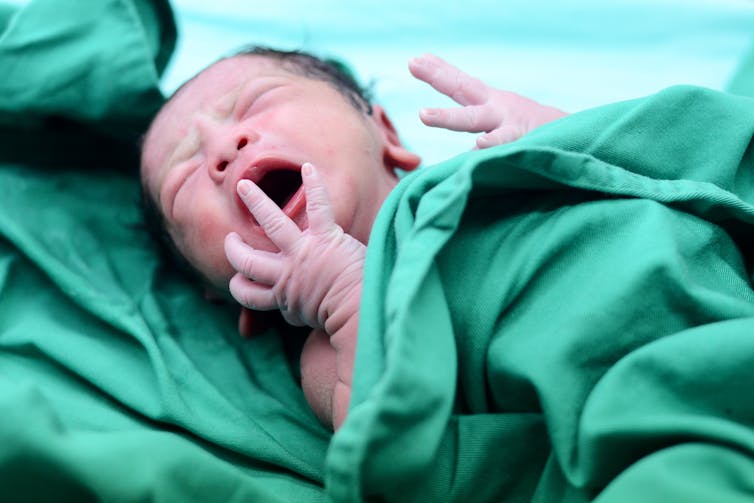The Duke and Duchess of Sussex — Prince Harry and Meghan Markle — have announced the birth of their first child, a baby boy.
While the world has waited anxiously for news of this British royal birth, there has been intense speculation about where Meghan Markle, the Duchess of Sussex, would deliver her baby.
Reports that she wished to deliver her baby at home for reasons of privacy and comfort have renewed debates about the safety of home birth.
While some media reports were positive about the idea, others warned about the risks of childbirth in general and, in particular, when it takes place at home.
A home birth is a safe choice
In the United Kingdom, most women gave birth at home until the 1960s. After the National Health Service was established, the Peel Report of 1970 recommended universal hospital birth. By 1975, only five per cent of women still gave birth outside of hospital.
The story in Canada is similar, with a sharp move away from home birth occurring in the middle of the 20th century. Safety for both mother and child has been declared the reason for this shift.

However, there is little evidence that hospitals have made birth safer for women who are experiencing normal, healthy pregnancies.
I am a registered midwife in Ontario and an assistant professor in the midwifery education program at McMaster University. My colleagues and I take great pride in providing evidence-based care to the pregnant women who choose midwifery care. We know that good evidence supporting the safety of home birth has been lacking in the past.
Recent research from several countries, however, has shown that for those with low-risk pregnancies, giving birth at home is a safe choice.
Lower rates of caesarean section
In Canada, three studies — one from British Columbia and two from Ontario — have looked at the outcomes of more than 21,000 planned home births.
The planned home birth group included women who were transferred to hospital. They were compared to the outcomes for low-risk women having hospital births attended by midwives or family physicians.
These studies all showed that the outcome for newborns was the same. But the women who planned a home birth had lower rates of obstetrical intervention, such as pain medication and fetal monitoring, and lower rates of caesarean section.
Similarly, in England, a study of place of birth, including home birth, concluded that, overall, outcomes for the newborn did not differ by place of birth.
The newborns of first-time mothers, however, did have a slightly higher chance of a poor outcome. On the other hand, in the Netherlands, where home birth is more common, a study of 529,688 births showed no differences in newborn outcomes between home and hospital births, even though more than 40 per cent of women in the study had planned a home birth.
Publicly funded midwifery is essential
A key component that promotes the safety of a planned home birth is the existence of regulated and well-trained midwives who are integrated into the health-care system.

In Canada, the U.K. and the Netherlands, midwives receive university-level education. Midwifery care, regardless of birthplace, is publicly funded, and access to emergency services and hospital birth is readily available. Smooth transfer to hospital, when needed, is an important part of safe home birth services.
In Canada, approximately 20 to 25 per cent of planned home births are transferred to hospital. Most of these transfers are for non-emergency reasons such as prolonged labour or need for pain relief. In many cases, midwives continue their care for the woman in the hospital.
Currently in Ontario, about 4,000 or three per cent of the 140,000 births that occur per year are planned to take place at home.
A long tradition of royal home births
Over the past few years, planned home birth has increasingly gained acceptance by obstetricians. The Society of Obstetricians and Gynaecologists of Canada recently released a statement that supports the choice of home birth for healthy, low-risk women.

In the United Kingdom, the National Institute for Health and Care Excellence recommends that healthy women with uncomplicated pregnancies consider out-of-hospital birth, including home birth, to reduce rates of intervention, especially caesarean section.
If the birth of Baby Sussex did, indeed, take place at Frogmore Cottage, it will become part of a long tradition of royal babies born at home.
And, no doubt, a royal home birth would spark an increase in this choice of birth place in the United Kingdom and elsewhere.

